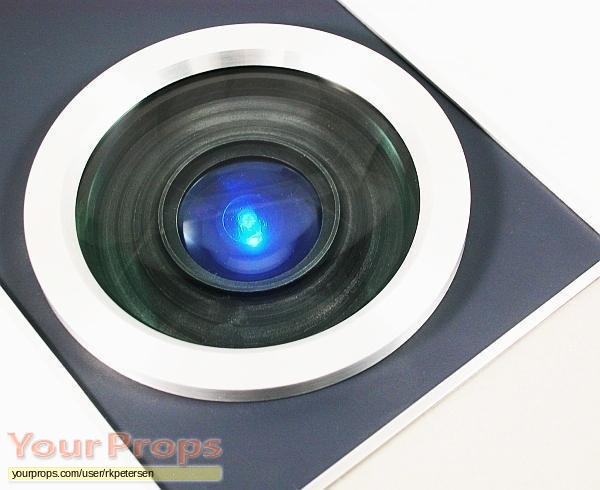

It starts with the scene where the astronaut is eating while watching his “IBM pad” which just displays “next scheduled transmission” and the countdown is at “00 04”. I am ripping only the piece that contains the HAL dialogue, which covers chapters 15 to 29 (starting at 59min 10sec and lasting 62min 54sec) on the US DVD. The audio quality in handbrake was set to 320kbps, 48kHz. All of this is described in another blog post.

Hal 9000 replica prop forum Pc#
So I decided to extract all of HAL’s sound clips from the audio track of the DVD (I used the the US version).Įverything was done on a Linux PC using free software: Handbrake (to rip the DVD), VLC player (to extract the audio track), and Audacity (to separate, edit, and fade in/out the individual clips). But many of those had plenty of background noise, some were distorted, and they had inconsistent volumes.
Hal 9000 replica prop forum movie#
I have made a complete list of all of HAL's clips from the "2001: A Space Odyssey" movie in this blog post.įor initial tests, I used a few sound clips that I found on the web. Whenever the PIR sensor in my HAL 9000 replica senses motion, it triggers one of the HAL sound clip from the movie. This is the completed front plate of my HAL 9000. In addition, I achieved a nice effect by lowering the frame rate to 8 fps by using the option “-fps 8”. This file needs to be included as input of the mplayer command “-input file=ttings”. This was fixed by adding a new file “ttings” in my home directory which contained the following The picture of the USB web cam can be displayed on the screen using the “mplayer” command Step 4: display the picture of the USB web cam on the screen Overscan_right=26 # increase if picture flows off to the right Overscan_left=16 # increase if picture flows off to the left The following dimensions are what I decided to use for the panel. In the articles at and other sources on the web you can find slightly different values. The very first step, was to come up with the dimensions for the face plate. So, my HAL is made of wood – and it uses the arcade button for the eye, although with some improvements, as compared to the article. I do not have access to tools for working with metal or aluminum. If, at the first glimpse, people are not able to distinguish my HAL from the original, this is good enough for me. In that spirit, I did not plan to go the extra mile to achieve a 100% replica, but I was happy at the 97% level, if it allowed me to stay on a budget below $100. In the Adfafruit article, they mention the 80/20 Rule (that 80% of a result stem from 20% of the effort). Then, I found an article at in which they build a HAL replica, using a 4-inch Arcade button which looks very close to HAL’s eye. As discussed in the two links above, the original HAL features a rare Nikkor fish-eye 1:8 f=8mm lens which is beyond my budget, and which is not easy to replicate. The most important single detail is, of course, the eye. Great research has been made in a contribution at and another thread on that site has some additional resources on the measurements. On the web, I found some really nice inspirations. The first step was, of course, building the main HAL panel. The whole device is operated by an Arduino and a Raspberry Pi. Auto-shutoff occurs after 2 minutes of inactivity, or it can be shut down manually by pressing any button on any IR remote.My goal was to build a pretty good replica of the HAL panel, and then take some freedom and mount this on a bigger plate that features a few displays and input devices (buttons, joystick).

Illumination of HAL's eye and the interactive audio clips are now activated by twisting the lens bezel, replacing the previous version's concealed switch. This prop represents an upgraded version of the superb HAL replica previously released by SD Studios, with further accurization and tweaking of dimensions, materials, finish, and electronics. High quality audio, including 15 different professionally digitized HAL voice clips, randomly activated by sound or infrared remote. Custom CNC-stamped metal speaker grill, with the correct number and arrangement of perforations and corrugations. Custom ground glass lens and machined metal lens components, with orange-red gel filter and yellow-white LED, replicating the necessary elements of the original Nikkor fish-eye lens used to create HAL's distinctive gaze. Full-size metal & glass hero replica of the strangely disquieting face of HAL, the calmly homicidal supercomputer whose conflicted programming doomed the Discovery One Jupiter mission.īlack-satin etch anodized aluminum backplate, with accurate vinyl HAL 9000 logo.


 0 kommentar(er)
0 kommentar(er)
